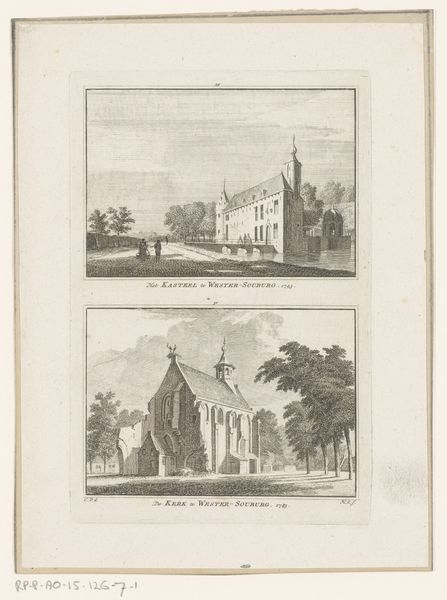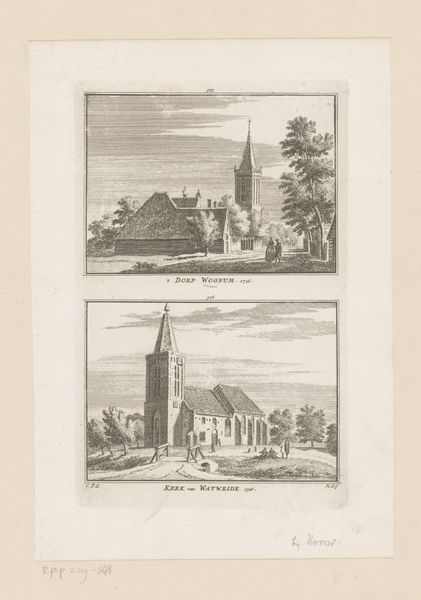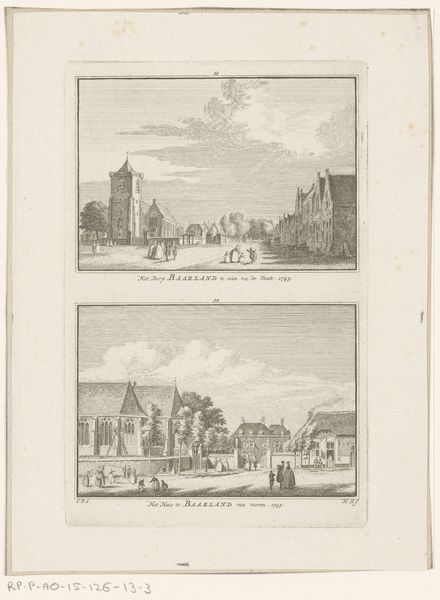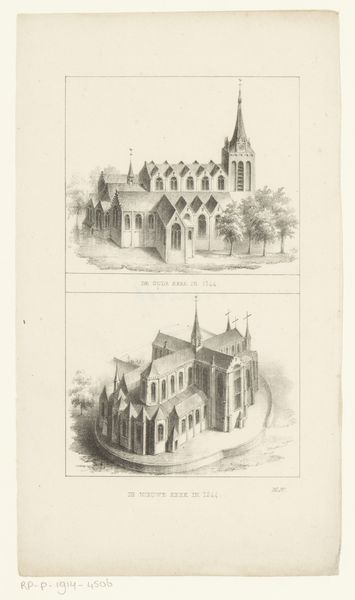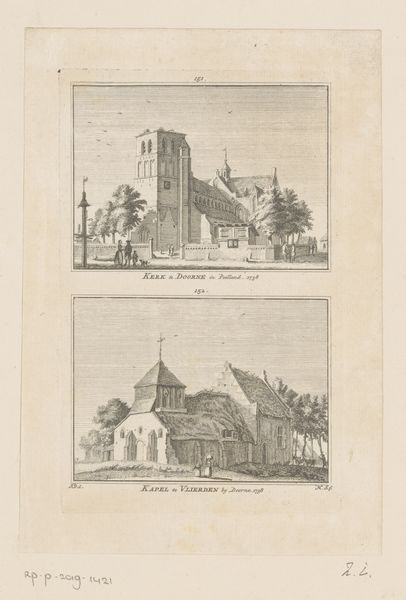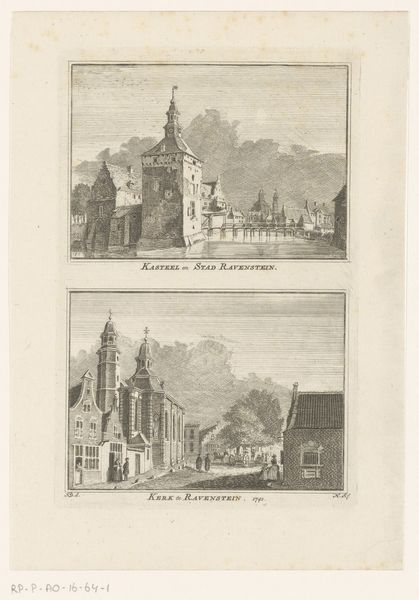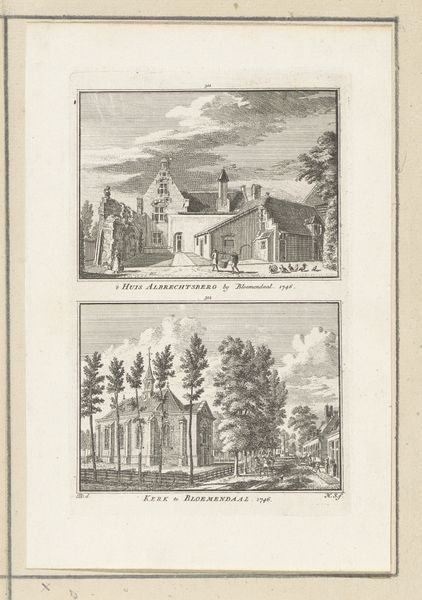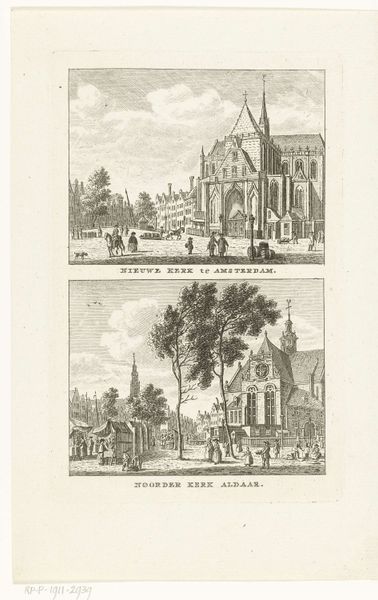
print, engraving, architecture
#
dutch-golden-age
# print
#
cityscape
#
engraving
#
architecture
Dimensions: height 160 mm, width 104 mm
Copyright: Rijks Museum: Open Domain
Hendrik Spilman created this print titled 'Twee gezichten in Tholen' in 1743, showcasing the Waterpoort and the Grote Kerk in Tholen. Spilman, born in Amsterdam, lived during a time of significant social stratification, where class and religious affiliations heavily influenced daily life and opportunities. This artwork offers a glimpse into the physical and social landscape of the Netherlands during the mid-18th century. The detailed rendering of the architecture speaks to the period's emphasis on civic pride and the importance of religious institutions in community life. Yet, it is important to consider the historical context; the Dutch Golden Age had passed, and the Republic was facing economic challenges and internal political divisions. Note how the artist meticulously depicts the structures, possibly mirroring the social hierarchies embedded within them. The placement of figures around these landmarks subtly hints at the daily lives and social interactions of the town's inhabitants. How might these buildings have served as both physical and symbolic representations of power and community in 18th-century Tholen?
Comments
No comments
Be the first to comment and join the conversation on the ultimate creative platform.


